Looking for Flaws and Inclusions
To inspect for flaws and inclusions, you will need a jeweler’s magnifying glass with ideally 10x magnification. Fissures and cracks are the most common inclusion in emeralds. And beyond that, natural emeralds form with tiny imperfections, including minute mineral crystals (biotite, pyrite, tremolite and so on), two-phase inclusions, three-phase inclusions, and fingerprint-like inclusions. If your gem is eye-clear, with almost none of these flaws, it may be a lab-created emerald, or not a gemstone at all.
- A gas bubble trapped in liquid inclusion is common in natural emeralds, forming a two-phase inclusion. If you see only a group of bubbles, the gem is likely glass.
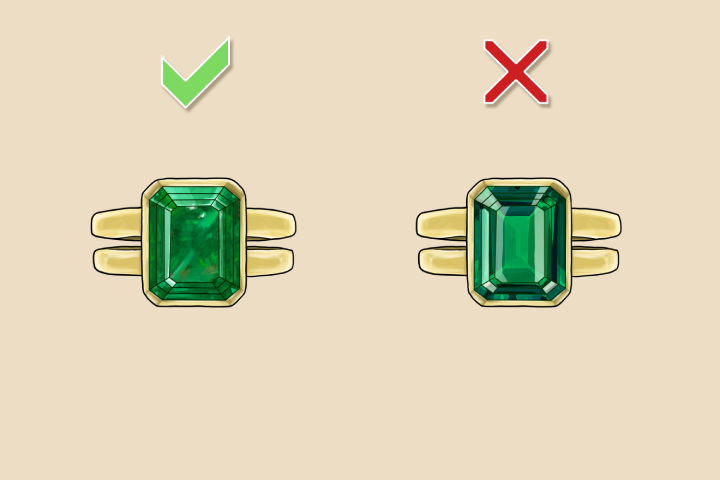
Check for the Sparkling Effect
Real emeralds don’t produce much “fire” or colorful flashes under light. If your gem displays a rainbow of flashes, it’s probably fake.
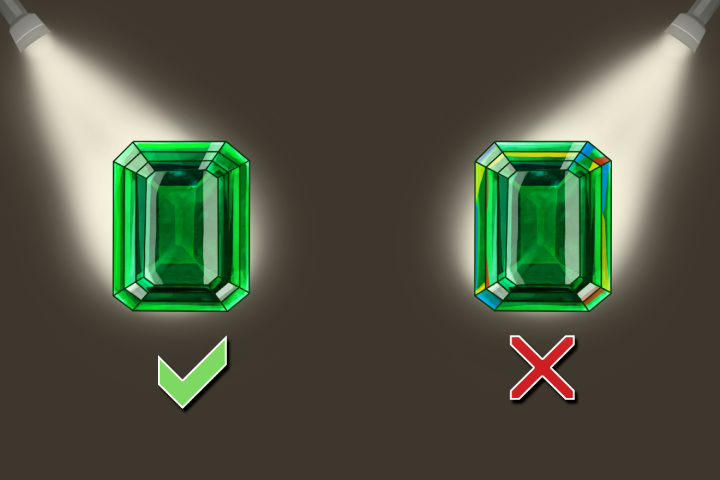
Look for Wear on the Facets
To check for wear on the facets, look for any signs of softness or wear on the edges of the facets. Genuine emeralds are made of a durable material, so they should not show signs of wear easily. If the edges look worn or slightly rounded, it is possible that the gem is fake, especially if it is made of glass.
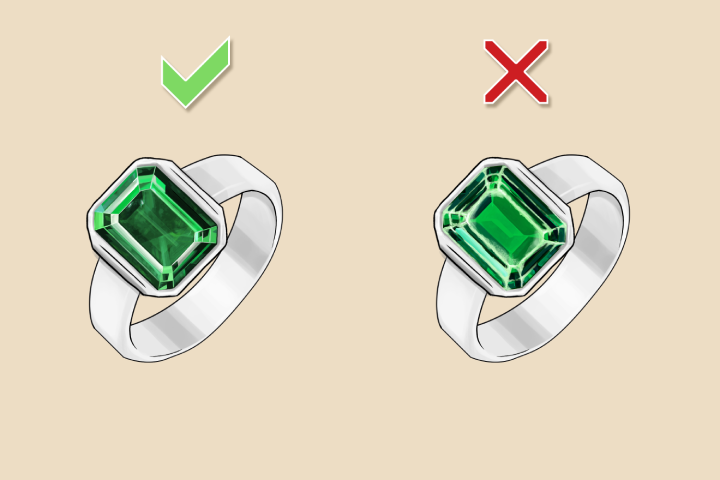
Check for Layers
Soudé emeralds are made from two or three layers of different materials, often with a green layer in between two colorless stones. If the emerald is not mounted, you can try immersing it in water and viewing it from the side to see these layers. On a mounted emerald, you can try examining the area around the girdle for any odd color changes.
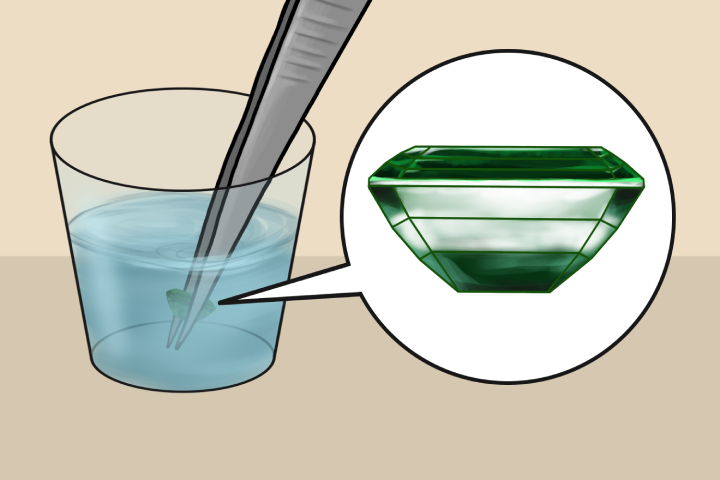
Beware of Cheap Prices
Keep an eye on prices when shopping for emeralds. A natural, vivid green emerald with a brilliant luster usually cost at least $500 per carat. If the price seems too good to be true, it’s possible the emerald is fake or low quality. Synthetic emeralds tend to be cheaper, with a price range of around $75 per carat for small stones.
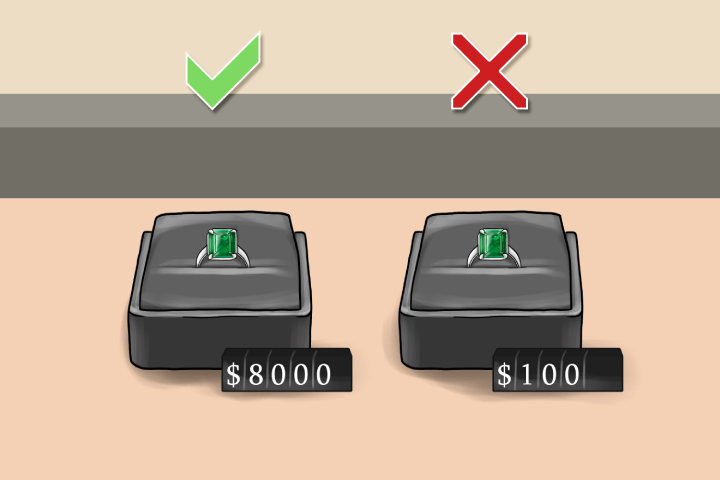
Shine a Blacklight onto the Emerald
Place the emerald in a dim or dark room, and shine the “long wave” blacklight on the gem. Observe the color of the fluorescence. Natural emeralds typically show no fluorescence or dull red fluorescence. If the emerald has bright red fluorescence, it may be synthetic.
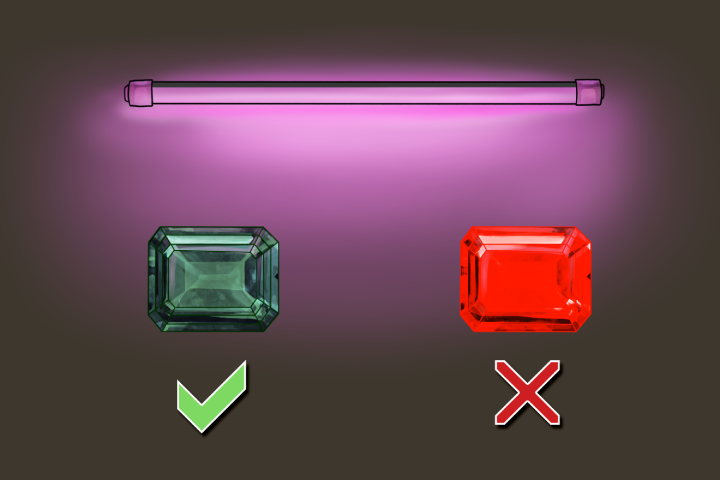
Tips:
- It is a good idea to use multiple methods to determine the authenticity of an emerald, as no single test is foolproof.
- If you are unsure about the authenticity of an emerald, seek the evaluation of a professional. They have the expertise and specialized equipment needed to accurately determine the gem’s authenticity.